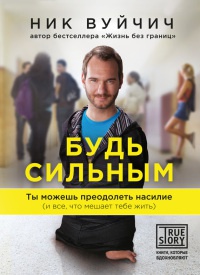146. J. Litman, “Curiosity and the Pleasures of Learning: Wanting and Liking New Information," Cognition and Emotion 19, no. 6 (2005): 793-814.
147. A. Gosline, “Bored to death: Chronically Bored People Exhibit Higher Risk-Taking Behavior,” Scientific American, Feb. 26,2007, www.sciam.com/article. cfm?id=bored — find-something-to-live-for.
148. C. Yamal and X. Qian, “Older-Adult Playfulness: An Innovative Construct and Measurement for Healthy Aging Research,” American Journal of Play 4, no. 1 (2011): 52-79.
149. Robert Frost, “The Road Not Taken” (poem). Mountain Interval (New York: Henry Holt, 1915).
8. Молодость мозга и гибкий ум: шаг пятый
150. Е. Goldberg, The Wisdom Paradox (New York: Gotham Books, 2005).
151. C. Herzog et al., “Enrichment Effects on Adult Cognitive Development,” Psychological Science in the Public Interest 9, no. 1 (2008): 1-65.
152. B. Chanowitz and E. Langer, “Premature Cognitive Commitment.” Journal of Personality and Social Psychology 41, no. 6 (1981): 51-63.
153. E. Langer, Mindfulness (New York: Da Capo Press, 1989).
154. C. Coppens et al. (2010). “Coping Styles and Behavioural Flexibility: Towards Underlying Mechanisms,” Philosophical Transactions of the Royal Society 365, no. 1560 (2015): 4021-28.
155. C. Coppens et al. (2010). “Coping Styles and Behavioural Flexibility: Towards Underlying Mechanisms,” Philosophical Transactions of the Royal Society 365, no. 1560 (2015): 4021-28.
156. D. Kahneman, Thinking, Fast and Slow (New York: Farrar, Straus and Giroux,
2011).
157. J. Hawley, The Bhagavad Gita: A Walkthroughfor Westerners (San Francisco: New World Library, 2001).
158. M. Merzenich, Soft-Wired, 2nd ed. (San Francisco: Parnassus Publishing, 2013).
159. D. Durstewitz et al. “Abrupt Transitions between Prefrontal Neural Ensemble States Accompany Behavioral Transitions during Rule Learning,” Neuron 66 (2010): 438-48.
160. S. Floresco, “Prefrontal Dopamine and Behavioral Flexibility,” Frontiers in Neuroscience 7, no. 62 (2013).
161. G. Buzsaki, Rhythms of the Brain (New York: Oxford University Press, 2006).
162. K. Druck, The Real Rules of Life: Balancing Life’s Terms with Your Own (New York: Hay House Publishing, 2012), p. vxi.
163. D. Zabelina and M. Beeman, “Short-Term Attentional Perseveration Associated with Real-Life Creative Achievement," Frontiers in Psychology 4 (2013): 191.
164. Там же.
165. A.S. Griffin, D. Guez, F. Lermite, and M. Patience, “Tracking Changing Environments: Innovators Are Fast, but Not Flexible Learners,” PLoS ONE8, no. 12 (2013): Є84907, doil0.1371/journal.pone.0084907.
166. P. Greenwood, Nurturing the Older Brain and Mind (Cambridge, MA: MIT Press,
2012).
167. J. Singer, Memories that Matter (Oakland, CA: New Harbinger Publications, 2005).
9. Молодость мозга и оптимизм: шаг шестой
168. D. Hecht, “The Neural Basis of Optimism and Pessimism.” Experimental Neurobiology 22, no. 3 (2013): 173-99.
169. A. Reading, Hope and Despair: How Perceptions of the Future Shape Human Behavior (Baltimore: The Johns Hopkins University Press, 2004), 3.
170. L. Abramson, M. Seligman, and J. Teasdale, “Learned Helplessness in Humans: Critique and Reformulation,” Journal of Abnormal Psychology 87, no. 1 (1978): 49-74.
171. T. Sharot et al., “Dopamine Enhances Expectation of Pleasure in Humans," Current Biology (2009), doi:10.1016/j.cub.2009.10.025.
172. T. Sharot, C. Korn, and R.J. Dolan, “How Unrealistic Optimism Is Maintained in the Face of Reality," Nature Neuroscience 14 (2011): 1475-79.
173. C. Moutsiana, N. Garrett, R.C. Clarke, R.B. Lotto, S.J. Blakemore, and T. Sharot, “Human Development of the Ability to Learn from Bad News, Proceedings of the National Academy of Sciences 110, no. 41 (2013): 16396-401.
174. R. Hanson and R. Mendius, Buddha's Brain: Practical Neuroscience of Happiness, Love and Wisdom (Oakland, CA: New Harbinger Publications, 2009).
175. C. Korn, T. Sharot, H. Walter, H.R. Heekeren, and R.J. Dolan, “Depression Is Related to an Absence of Optimistically Biased Belief Updating about Future Life Events,” Psychological Medicine 44 (2014): 579-92.
176. R. Chowdhury, T. Sharot, T. Wolfe, E. Diizel, and R.J. Dolan, “Optimistic Update Bias Increases in Older Age,” Psychological Medicine 4 (2013): 1-10.
177. M. Gallagher, S. Lopez, and S. Pressman, “Optimism Is Universal: Exploring the Presence and Benefits of Optimism in a Representative Sample of the World,” Journal of Personality 81, no. 5 (2013): 429-40.
178. R. Chowdhury, T. Sharot, T. Wolfe, E. Diizel, and R.J. Dolan, “Optimistic Update Bias Increases in Older Age.”
179. S.H. Kim, B. Cornwell, and S.E. Kim, “Individual Differences in Emotion Regulation and Hemispheric Metabolic Asymmetry,” Biological Psychology 89 (2012): 382-86.
180. R. Davidson, “Affective Neuroscience and Psychophysiology: Toward a Synthesis,” Psychophysiology 40, no. 5 (2003): 655-65.
181. K. Kakolewski et al., “Laterality Word Valence, and Visual Attention: A Comparison of Depressed and Non-Depressed Individuals,” International Journal of Psychophysiology 34 (1999): 283-92.
182. M. Seligman, Learned Optimism: How to Change Your Mind and Your Life, 2nd ed. (New York: Pocket Books, 1998).
183. M. Yapko, Depression Is Contagious (New York: Free Press, 2009).
184. A. Leaver, J. Van Lare, B. Zielinski, A. Halpern, and J. Rauschecker, “Brain Activation during Anticipation of Sound Sequences,” Journal of Neuroscience 29. no. 8 (2009), 2477, doi:10.1523/JNEUROSCI.4921-08.2009.
185. К. Walker and A. King, “Auditory Neuroscience: Temporal Anticipation Enhances Cortical Processing,” Current Biology 12:21, no. 7 (2011), R251-3, doi:10.1016/j. cub.2011.02.022.
186. R. Sapolsky, “Are Humans Just Another Primate?” Pritzker Lecture, California Academy of Sciences, Feb. 15,2011: retrieved Apr. 20,2014, from http://video. calacademy.org/details/349.
10. Мозг и умение сопереживать: шаг седьмой
187. J. Crabtree, “Agnes the Ageing Suit,"JFT Magazine, July 22,2011: retrieved May 6, 2014, from www.ft.com/cms/s/2/lfedleee-b34b-lle0-9af2-00144feabdc0.html.
























